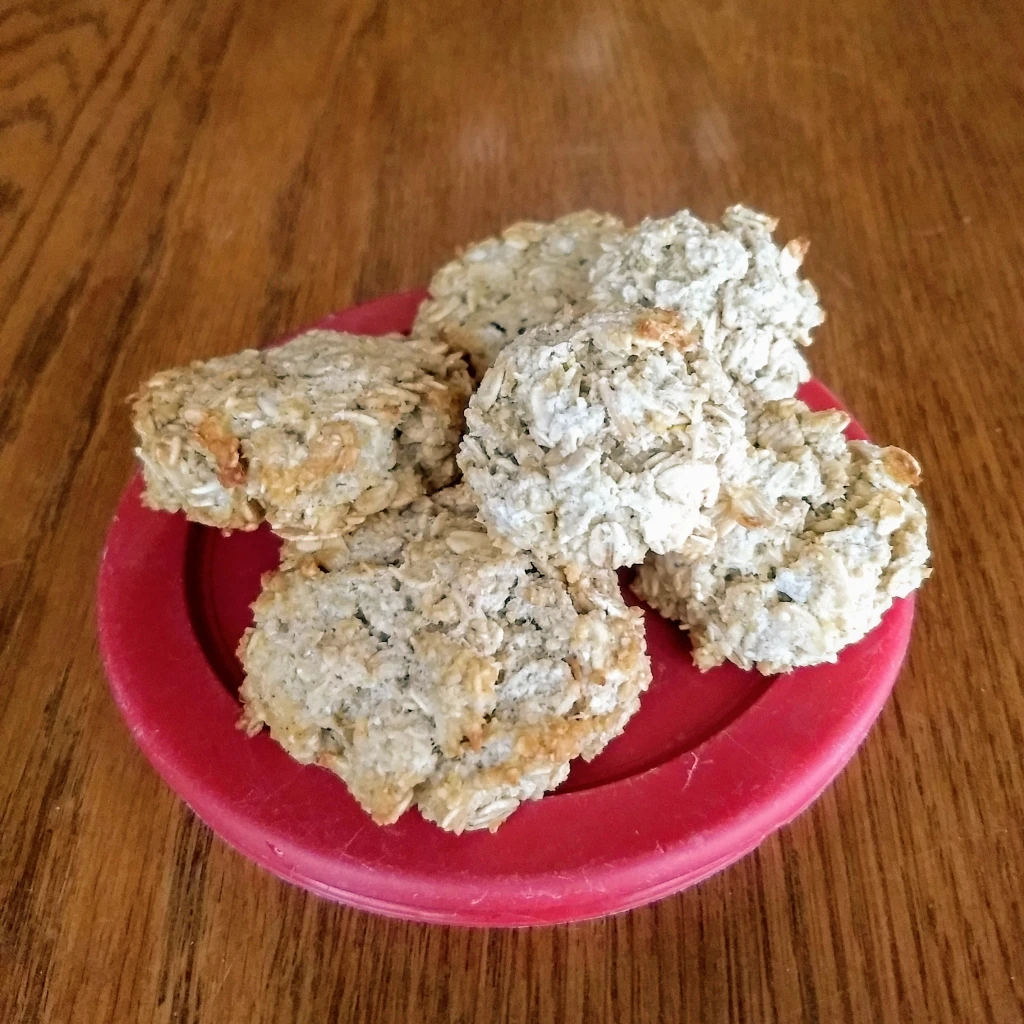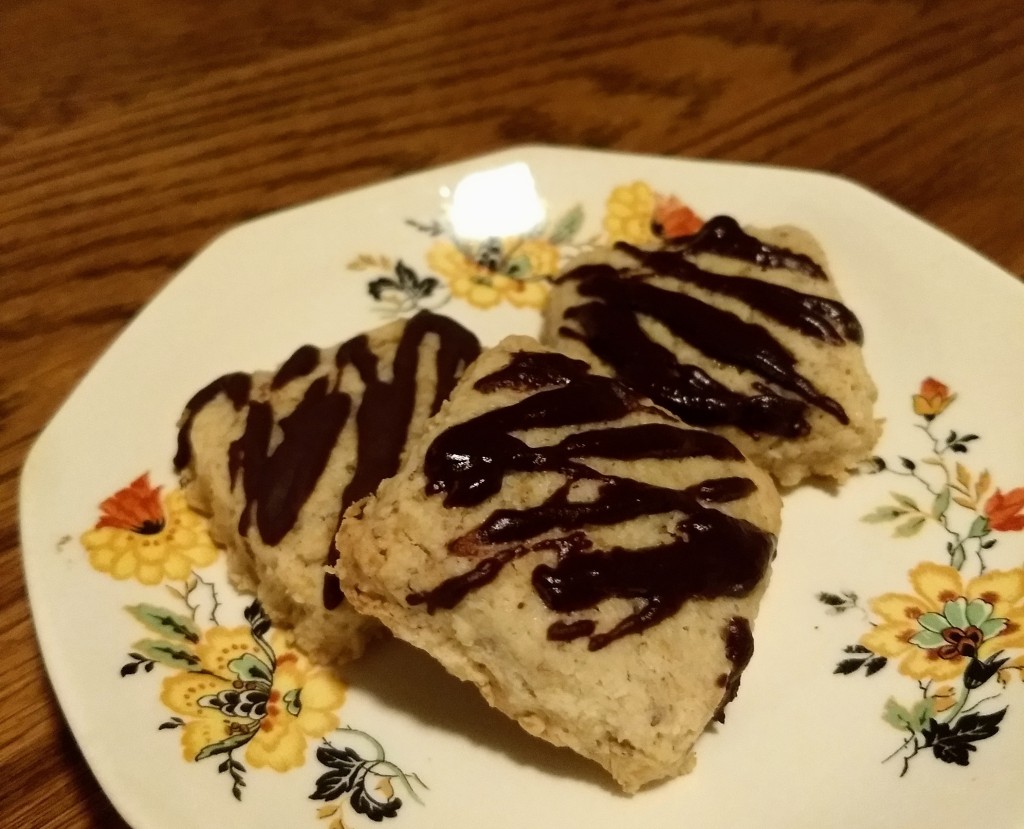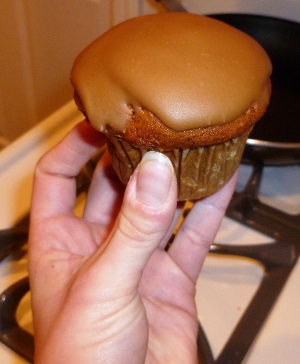
I’ve been having some crazy allergic reactions to …something… it’s unclear what. So I’m on a hypoallergenic diet at the moment, which means no dairy, no wheat, no nuts (basically, all that good stuff). This makes finding allergy friendly cookies a bit tricky.
Looking online for “hypoallergenic cookies” I didn’t find much. A lot of the vegan recipes call for butter substitutes, which I’m trying to avoid; or nuts or wheat, which aren’t hypoallergenic. So I decided to repurpose my favorite oatmeal cookies recipe (the Cook’s Illustrated oatmeal chocolate chip recipe) with some adjustments to switch out the problem stuff, and make my own allergy friendly version.
They turned out great! Crunchy on the outside and moist and chewy on the inside, with a really comforting oatmeal cookie flavor.
I haven’t tried making them “big cookie” size; if you want to give that a go you might want to reduce the oven temp to 325⁰F. My significant other says these are the cookie version of a bowl of oatmeal, so they might be good with an added 1/2 c raisins too if you feel comfortable adding those.
Note on allergies: Theoretically it’s possible to develop an allergy to anything, so if you aren’t sure what you are allergic to, ask your doctor about the ingredients you see below before eating them.
- These DO contain garbanzo beans, and rarely some people may be allergic to beans. As long as you don’t have a true bean allergy, even for those whose stomachs are sensitive to most beans, garbanzo beans tend to be very tummy-friendly.
- The sugar I used, lakanto, does have xylitol in it, which may make some people a bit gassy. If you’re sensitive to that you may want the reduce it to 1 cup and avoid eating a very large amount of cookies at one sitting.
- If you are cooking for someone who has an allergy, check with them first if these ingredients are OK. Many people with a general gluten allergy are fine with oats, but people who have celiac disease may not be.
- The term “oil free” is widely misused to mean the same thing as “no added oil” or even “lots of oil but from whole foods only.” Technically these cookies do contain a bit of oil from the garbanzo beans, but it is a very small amount and not very likely to pose problems for people who are having trouble processing fats.

Hypoallergenic Oatmeal Cookies (vegan, dairy free, sugar free, oil free, nut free)
Ingredients:
- 1 1/4 c oat flour (from old fashioned oats — see instructions)
- 1/4 tsp salt
- 1/2 tsp baking powder
- 1/4 tsp cinnamon
- 1/4 tsp allspice
- Pinch of ground ginger
- Pinch of ground clove
- 1/3 cup garbanzo beans, reserve the water from the can separately
- 2 c summer squash, diced
- 1 1/4 c lakanto monkfruit sweetener brown sugar style (if you’re using another sugar replacement you may need to use less)
- 2 1/4 c old fashioned oats
Instructions:
- Preheat oven to 350⁰F. Put parchment paper on 2 baking sheets and set aside.
- To make oat flour, measure out old fashioned oats to the desired amount you want to have as flour, plus 1-2 Tbsp. Run these oats in food processor until flourlike.
- Thoroughly mix oat flour with other dry ingredients except actual oats, in a bowl. Set aside. Rinse food processor.
- Put beans, squash, and 1/4 to 1/3 c of bean water into food processor (1/3 c is better if you are at a higher altitude). Process until it is smooth and about the same wetness as apple sauce. Put wet ingredients mix in a medium or large mixing bowl.
- Mix dry ingredients into wet. Now mix in oats. Mix should be only a bit more crumbly than normal oatmeal cookies dough, and should hold together well if you squeeze it into a ball. If it’s too dry, add more bean water.
- Squish 1-2 Tbsp of mix into a ball in your hand or using a measuring spoon, and place on parchment-paper-lined cookie sheet. If doing 2 Tbsp size cookies (1st photo below), flatten them into thick discs and then flatten sides so each cookie is a sort of small hockey puck shape. If doing 1 Tbsp tea-cookie size (2nd photo below), you can use a round tablespoon measuring spoon to scoop them out. You can space these (either size) about an inch apart, they will puff upward a bit but not really outward.
- Bake about 12 minutes or until toasted a light brown around the tops. If you like a more doughy cookie, cook only until just barely toasted on tips of tops (like in 2nd photo below)
- Remove from oven, and take cookies off of sheet to cool for at least 5min before eating. Store in an airtight containers about a week. These would probably also freeze well.








